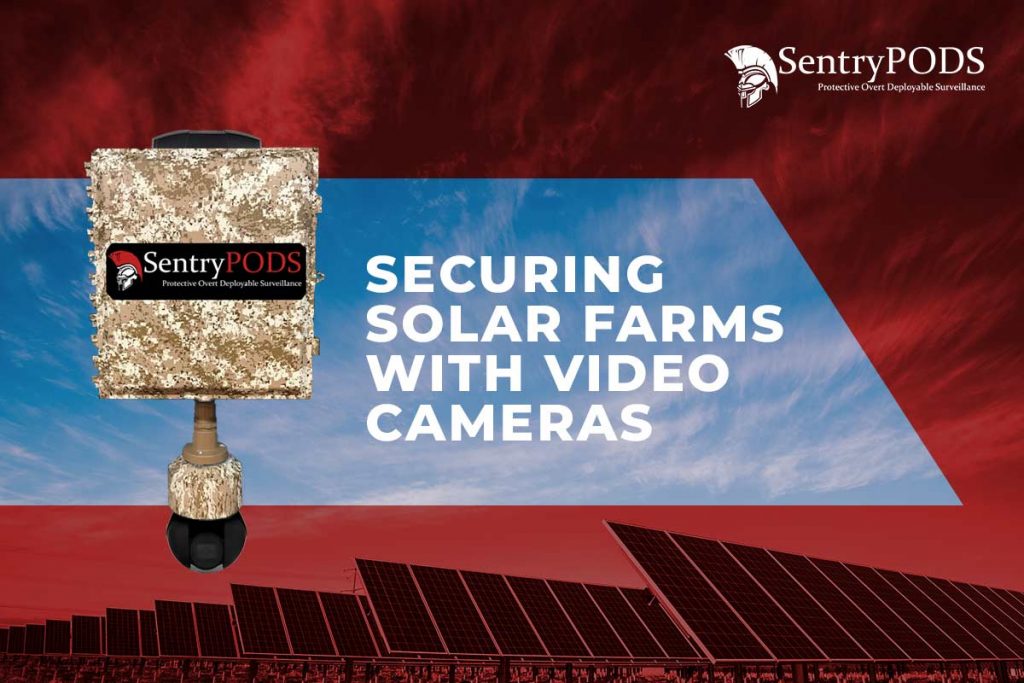Securing Solar Farms With Video Cameras
 A large-scale solar farm, also known as a photovoltaic power station, is a massive solar array that converts sunlight into energy that is then routed to the power grid. Many of these huge arrays are owned by utilities and supply power to properties in their coverage area. Utility-scale solar has been generating reliable, clean electricity with a stable fuel price for decades. As of 2018, there were more than 37,000 megawatts of utility-scale solar projects operating in the United States, with another 112,000 megawatts under development. With the use of solar-generated electricity on the rise, solar farms need to be protected from both physical and cyber threats. Solar farm cameras can help operators secure the physical perimeter of the farm, while integrated surveillance systems can provide the security that is necessary to keep the nation’s energy infrastructure safe. With that being said, the need for critical infrastructure surveillance continues to grow.
A large-scale solar farm, also known as a photovoltaic power station, is a massive solar array that converts sunlight into energy that is then routed to the power grid. Many of these huge arrays are owned by utilities and supply power to properties in their coverage area. Utility-scale solar has been generating reliable, clean electricity with a stable fuel price for decades. As of 2018, there were more than 37,000 megawatts of utility-scale solar projects operating in the United States, with another 112,000 megawatts under development. With the use of solar-generated electricity on the rise, solar farms need to be protected from both physical and cyber threats. Solar farm cameras can help operators secure the physical perimeter of the farm, while integrated surveillance systems can provide the security that is necessary to keep the nation’s energy infrastructure safe. With that being said, the need for critical infrastructure surveillance continues to grow.
Maximize Your Security Profile With Solar Farm Cameras
The isolated nature of solar farms, which are often located in rural areas, means that there is very little chance of catching a criminal in the act of vandalizing a solar farm or stealing solar panels. The remote location of these facilities is very attractive to a variety of bad actors, who can easily create service disruptions for consumers and cost operators millions of dollars in damages if proper precautions are not taken to secure these facilities.
Today’s video surveillance cameras, which feature real-time video surveillance solutions and advanced data analytics, can strengthen a solar farm’s security profile and optimize facility operations. But in order to get the most benefit from solar farm cameras and other technologies, remember these key points:
- Place cameras along the perimeter of your facility – the perimeter of a solar farm should be secured with a physical barrier like fencing, with controlled access points for entry and exit. Adding high-definition video surveillance equipment to monitor activity and deter unauthorized entry can also increase a facility’s security.
- Place cameras at all entrance and exit points – in addition to physical barriers like gates, all access points should be monitored with surveillance equipment to record who is entering and exiting the facility.
- Position the cameras strategically – where you place your surveillance cameras matter. Walk the perimeter to determine where your cameras should be mounted, and install them so that they provide overlapping coverage to the areas you want to monitor. Consider investing in PTZ cameras to maximize the viewing area and provide even more coverage.
- Install cameras up high – installing cameras at a height that is difficult for a person to reach deters criminals from disabling your surveillance system. This simple trick ensures that your technology is tamper-proof.
- Add underground sensors – add a layer of protection to your perimeter’s fence line with a buried seismic sensor. These sensors can detect approaching vehicles or foot traffic, and send alerts to facility operators in real-time. Buried sensors are protected from the elements and can operate on batteries for years, making them a cost-effective addition to your security profile.
What Benefits Does Technology Provide For Solar Farms?
Ensuring the reliable and safe operation of the nation’s electrical grid is critical for the U.S. economy as well as national security. As our nation’s electric grid becomes increasingly digitized and connected, maintaining its security has become a greater challenge for energy providers. However, by combining physical security measures like fencing and gate access with video surveillance systems and solar farm cameras, operators will see the following benefits:
- Reduced revenue loss – solar farm cameras and video surveillance systems can help reduce revenue loss for solar farm operators by reducing the threat of theft and vandalism.
- Fewer service disruptions – by improving the security measures at solar farms, energy providers can secure their connection to the grid and ensure that consumers are not left without power.
- Reduced outages –advanced technologies like networked solar farm cameras and other surveillance technology help secure the nation’s infrastructure and energy supply across multiple sectors.
- Real-time alerts – when solar farm cameras are combined with advanced video analytics, facility operators can receive real-time notifications and respond to threats at the solar farm quickly.
- Documentation of events – access video, images, and long-term archives of your video footage for increased visibility of security events.
Solar farms require vast expanses of land for their operations and are generally located in extremely remote locations. Their location and size make them extremely difficult to secure, creating opportunities for theft and vandalism. Solar panels, wiring, and controllers are high in value and are the target of many thieves who can quickly steal tens of thousands of dollars of equipment and cause costly downtime and service outages. However, solar farm cameras and other video surveillance equipment can enhance the security measures at a facility and ensure that operators remain online without interruption.
To learn more about the solar farm security and surveillance options that are available through SentryPODS, click here.

Brent Canfield
CEO and Creator of SentryPODSBrent Canfield, CEO, and founder of Smart Digital and SentryPODS, founded Smart Digital in 2007 after completing a nine-year active-duty career with the United States Marine Corps. During the 2016 election cycle, he provided executive protection for Dr. Ben Carson. He has also authored articles for Security Info Watch.

